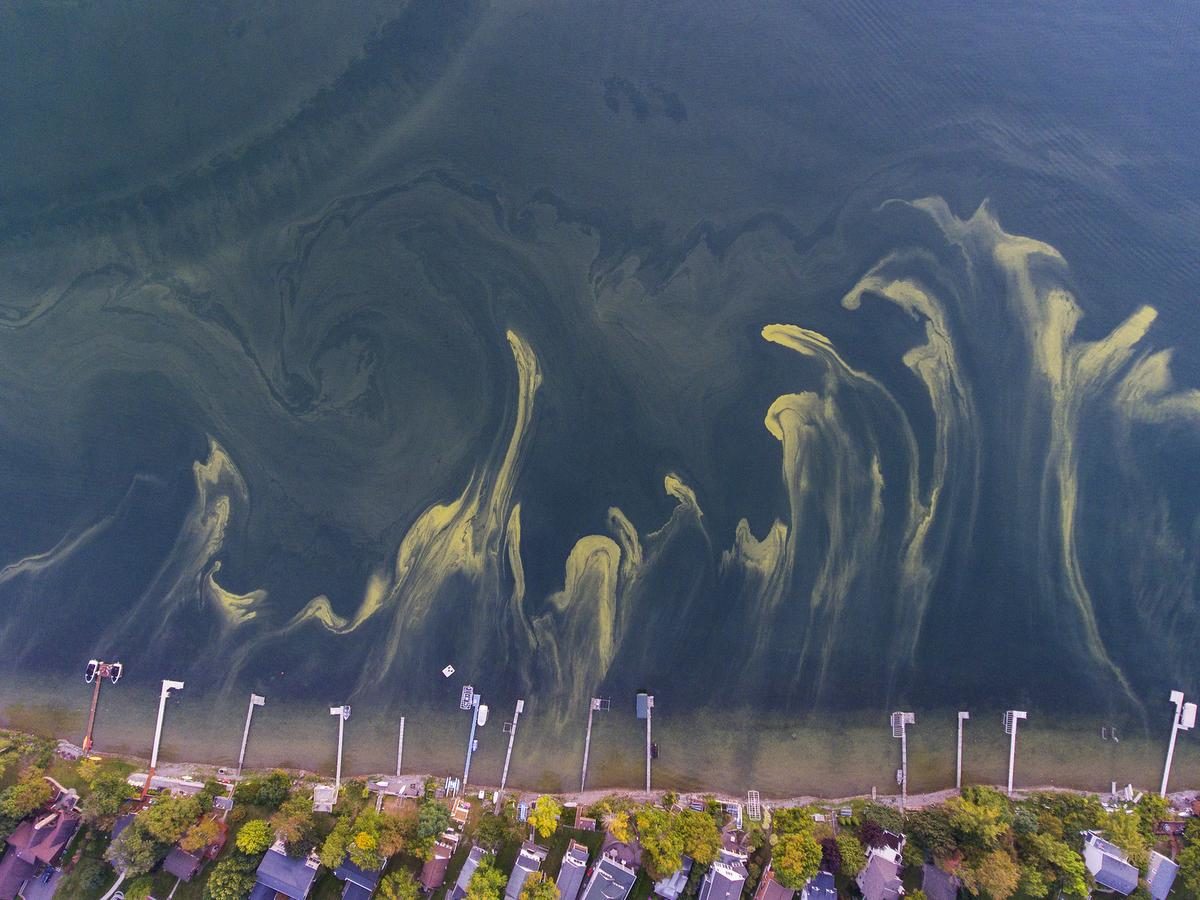The Finger Lakes Land Trust has launched a new initiative to expand the organization’s current water protection efforts. Toxic algae outbreaks in each of the Finger Lakes have generated alarming headlines over the last few years, prompting the Land Trust to take immediate action. Please see our new Water Quality hub.
Toxic algae, also referred to as harmful algal blooms, are actually cyanobacteria – naturally occurring organisms that thrive in relatively still, warm, waters rich in nutrients. When algae blooms form and cyanobacteria degrade, many release toxins including microcystins that can be harmful to aquatic and human life. At concentrated levels, these toxins pose a serious threat to the water quality in our lakes. See more toxic algae facts for everyone to know and actions we all must take together to fight toxic algae. Also see toxic algae resources and news.
The Land Trust is reaffirming its commitment to protect the region’s clean waters by escalating its work in five strategic areas:
- Protecting lakeshore and stream corridors will help prevent erosion, pollution, and nutrient runoff from entering our lakes. With support from New York State and private funders, the Land Trust has been increasing efforts to save our last remaining undeveloped lakeshore from development as well as protect pristine frontage on key tributaries to the Finger Lakes.
- Creating natural buffers along our streams will restore our lakes’ natural filtration system. Many streamside areas have been cleared of trees and shrubs to allow for agriculture or development. To restore this important natural system, the Land Trust will plant trees and shrubs along streams in areas that will be permanently protected.
- Restoring streams and wetlands to slow storm water runoff will protect our lakes during intense rain events. For nearly 200 years, drainage systems in our region have been enhanced in an attempt to dry farm fields and developed areas in the spring and to keep our roads from flooding. These efforts have the dual-effect of increasing nutrient runoff to our lakes. To restore some of the resilience of our original landscape, the Land Trust will work with partners such as the U.S. Fish and Wildlife Service to rehabilitate wetlands and streams that have been straightened.
- An educational resource hub about toxic algae is now online at fllt.org/water. Find easily accessible information about toxic algae and steps that individuals can take to reduce nutrient runoff. Staff will be updating the resources available on the site regularly and will also be out in the field meeting with landowners, community organizations, town officials and others.
- Strengthening partnerships with lake associations to complement local watershed protection efforts. Each of our eleven Finger Lakes is served by a non-profit lake association or watershed group and working together will maximize our collective impact.
Visit fllt.org/water to learn more about the Land Trust’s efforts to protect our lakes, streams, and drinking water; explore beautiful maps of our region’s watersheds; and find out what you can do to safeguard water quality in the Finger Lakes.


